Apple Unveils Self-Developed AI Lamp Robot: Beyond Cute, a Glimpse into Household Robotics
![]() 02/10 2025
02/10 2025
![]() 718
718
An AI Lamp Robot has captivated the public with its lively demeanor.
While we've witnessed robots in recent years redefining our perceptions, from running, rolling, to dancing, and seen products like Xiaomi's Pipi Lamp, this lamp robot stands out—reminiscent of Luxo Jr. from the Pixar logo.

Image/Apple
This lamp is a non-anthropomorphic robot developed by Apple's Machine Learning Research Team.
Rumors of Apple's household robot endeavors have circulated for some time, but the company has never officially acknowledged them or unveiled product details. However, Apple's Machine Learning Research Team recently published a research paper and a live demonstration video on its official website, showcasing the AI Lamp Robot's interactive capabilities and performance. This has sparked widespread discussions on platforms like X and Reddit.
At first glance, Apple's "lamp" doesn't have a peculiar appearance; if anything, it boasts more electromechanical structures than conventional lamps. The key lies in its movement—it can not only make the light follow books actively but also respond to simple touches and gestures.
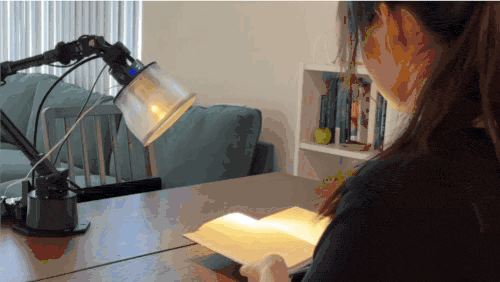
Image/Apple
Moreover, Apple's "lamp" conveys subtle personalities and emotions through smooth, delicate movements, such as feeling rejected or showing curiosity when observing an object.
The demonstration revealed that it's not just about emotional value. Apple's "lamp" supports voice and gesture interaction, visual observation through cameras, and content display through projection. For instance, it can provide problem-solving ideas when encountering homework difficulties.
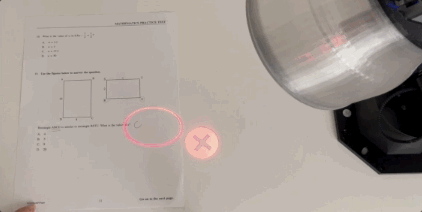
Image/Apple
Although still a prototype, it offers a glimpse into Apple's vision for household robots.
Apple AI Lamp: Smart and Beyond Practicality
After watching the demonstration video, what stands out most about this lamp robot developed by Apple's Machine Learning Research Team is its level of intelligence and interaction performance.
In one scene, Apple's "lamp" not only reminds the researcher to drink water but also actively pushes the water cup towards her with its head:
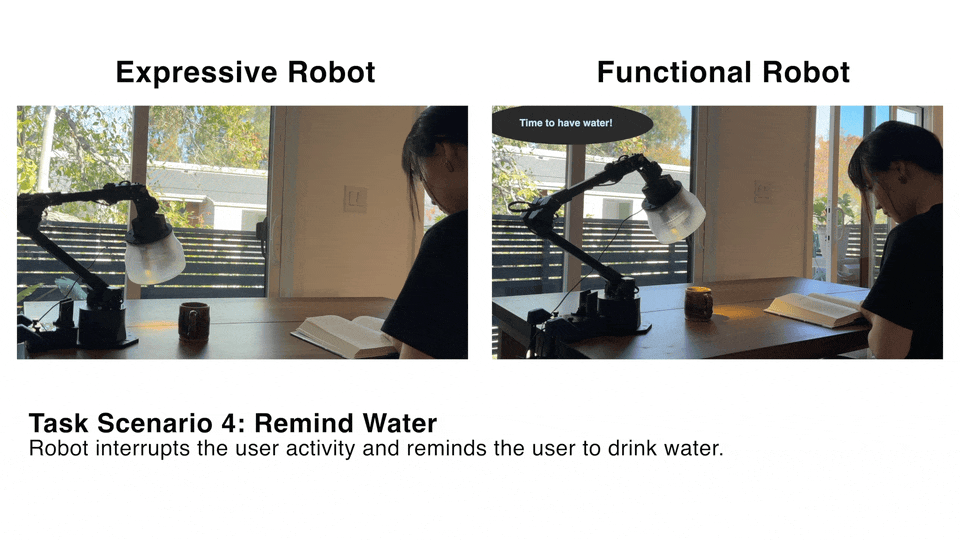
Image/Apple
The concept of actively reminding users has existed for a while, be it on mobile phones, PCs, or ChatGPT Tasks. However, these methods are confined to the digital world and cannot provide physical reminders.
AI lamp robots are not a new concept. Xiaomi's Pipi Lamp sparked heated discussions but was seen more as a toy with limited mobility and playability. ByteDance also ventured into this space with the Dali Intelligent Homework Lamp, integrating AI into the lamp concept, but its interaction was mostly software-based.
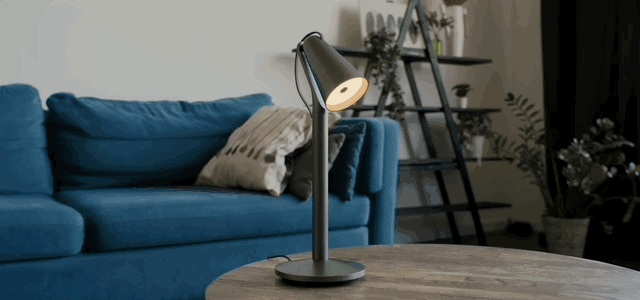
Xiaomi Pipi Lamp, Image/Xiaomi
Apple's "lamp" shows that when inquiring about the weather, it not only announces the forecast but also turns towards the outdoors, combining AI visual capabilities with real-time weather observation. Intriguingly, when told it can't go hiking, the "lamp" lowers its head and twists, conveying sadness and hurt feelings.
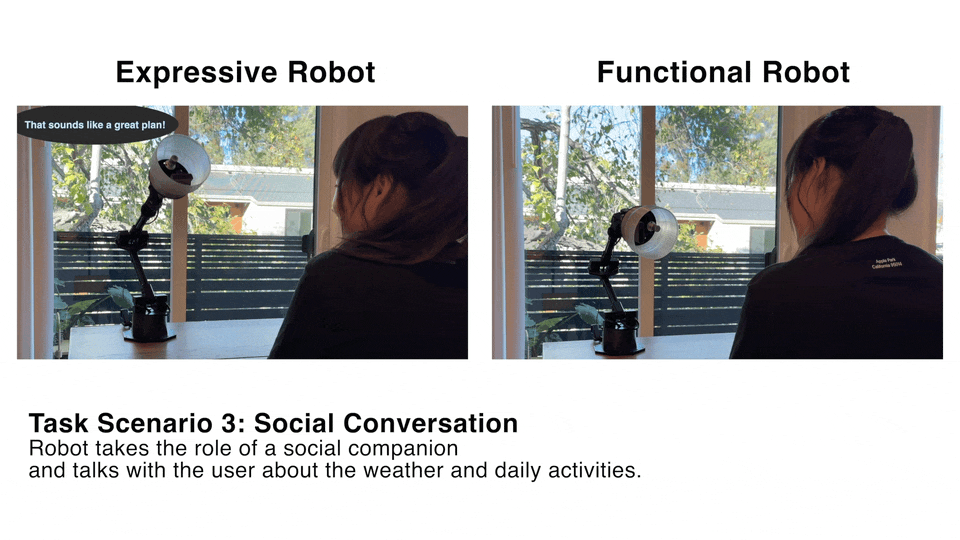
Image/Apple
During craft projects or desk research, users can ask the "lamp" for advice or even have it project needed content. At night, it automatically turns off the light when no other activities are detected.
Even when it can't complete a task after stretching, it "sadly" informs you it tried its best. Can you complain about that? It truly maximizes emotional value.
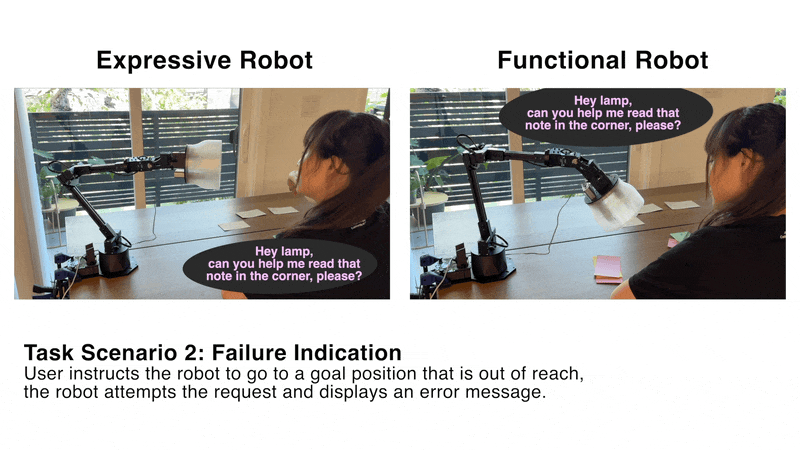
Image/Apple
In summary, both practicality and emotional value are crucial. This is evident in the Apple team's statement:
"To enable robots to interact with humans more naturally, movement design should integrate expressive qualities—like intention, attention, and emotion—alongside traditional functional considerations, such as task completion, spatial constraints, and time efficiency."
Lamp Transforms into Robot: Beyond Cute, Beyond AI Integration
Judging by the dialogue and intelligence level, it's likely that Apple's Machine Learning Research Team developed this lamp-shaped AI robot based on a large model. However, Apple's paper focuses not on AI level but on the "lamp's" precise, lively movements.
Titled "ELEGNT: Expressive and Functional Movement Design for Non-anthropomorphic Robot" (Elegant: Expressive and Functional Movement Design for Non-anthropomorphic Robots), three of the four authors are Chinese.
The paper reveals that the lamp's design was inspired by Luxo Jr., the classic Pixar character. Apple designed a framework for non-anthropomorphic robots in the form of lamps, emphasizing the integration of emotional expression and practical functionality through smooth, expressive movements in daily interactions.
In simple terms, to avoid stiff robotic movements affecting natural human-robot interactions, the Apple team developed a deep learning-based movement design framework, making non-anthropomorphic robots both expressive and functional.
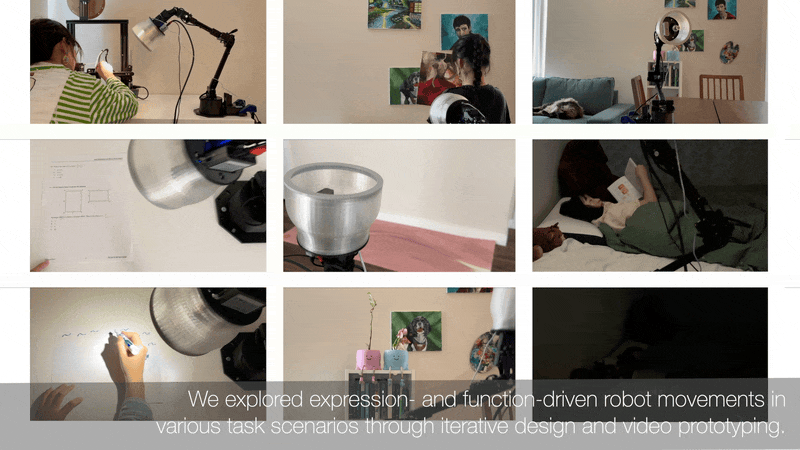
Image/Apple
The research team recruited 21 participants to observe human-robot interactions in six scenarios.
Results showed that compared to purely functional movement designs, expressive and functional designs significantly improved participant ratings—users preferred and accepted them more, with men showing a stronger preference than women and ordinary users preferring them more than professionals.
Initially, Xiaomi's Pipi Lamp garnered attention not for its functionality but for its novelty. Apple's AI Lamp prototype excels by possessing both emotional and practical value, transcending mere "cuteness."
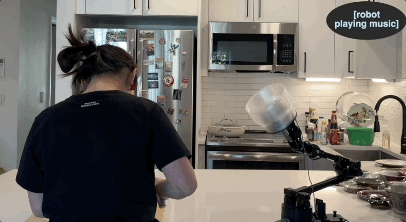
Image/Apple
Leveraging large model capabilities, Apple's lamp naturally supports natural language dialogue and visual functions. Given the challenges of humanoid robots entering households soon, this may be the path for household robots—becoming humans' "third eye" and "second brain" through multimodal large models.
Additionally, this "lamp" offers an initial look into Apple's human-computer interaction ideas, including AI voice interaction, AI vision + camera-based graphical interface display, and simple gesture and touch interaction. Especially, the visual + display capability enables the "lamp" to meet diverse scenario needs.
From this perspective, we can anticipate Apple's eventual launch of a desktop robot with both visual and display capabilities alongside voice, offering AI-based practical value while satisfying human emotional needs.
We Still Have a Long Way to Go Before General-purpose Robots
In 1977, George Lucas's "Star Wars" captivated audiences, with R2-D2 becoming a symbol of robots. When Musk introduced Tesla's Optimus at the We, Robot event last fall, he stated:
"Optimus will be everyone's own R2-D2."
In today's rapidly evolving large model technology, embodied intelligent robots have become a consensus. However, there's still debate about prioritizing humanoid or non-anthropomorphic robots.
One thing is clear: both chip manufacturer Digua Robotics (spun off from Horizon Robotics) and humanoid robot manufacturer Zhiyuan Robotics have stated that general-purpose humanoid robots are still far from entering our lives.
In contrast, non-anthropomorphic household robots may enter our lives sooner with rapid large model technology iterations, becoming the first wave of robots for humans.
Source: Lei Technology





